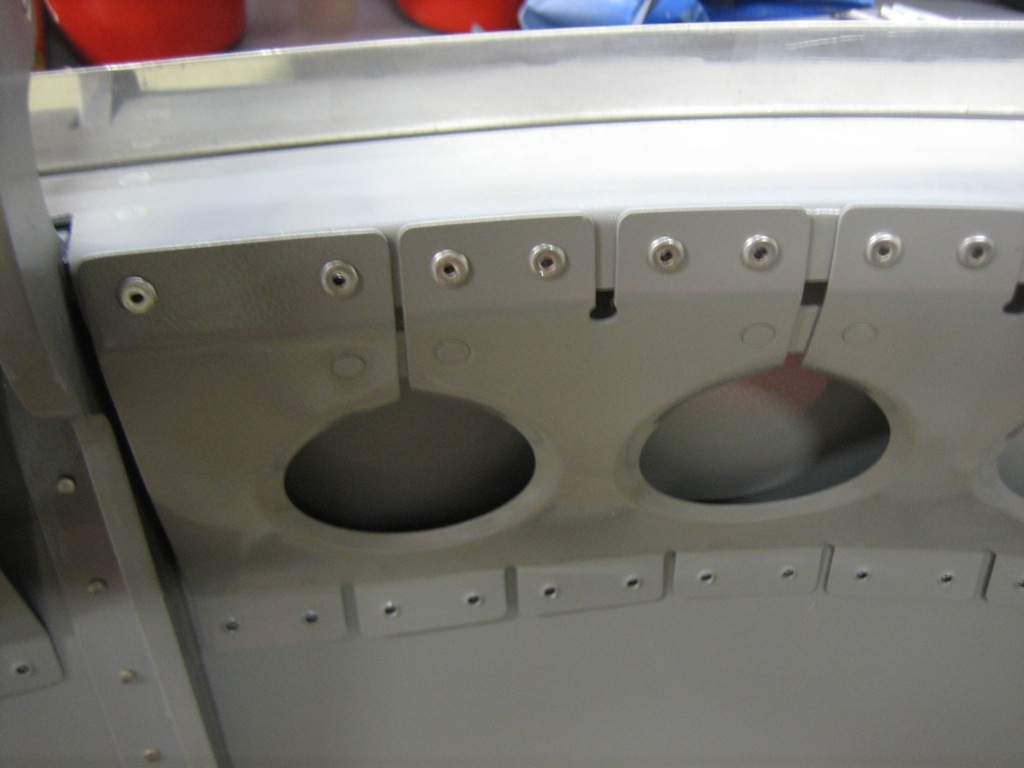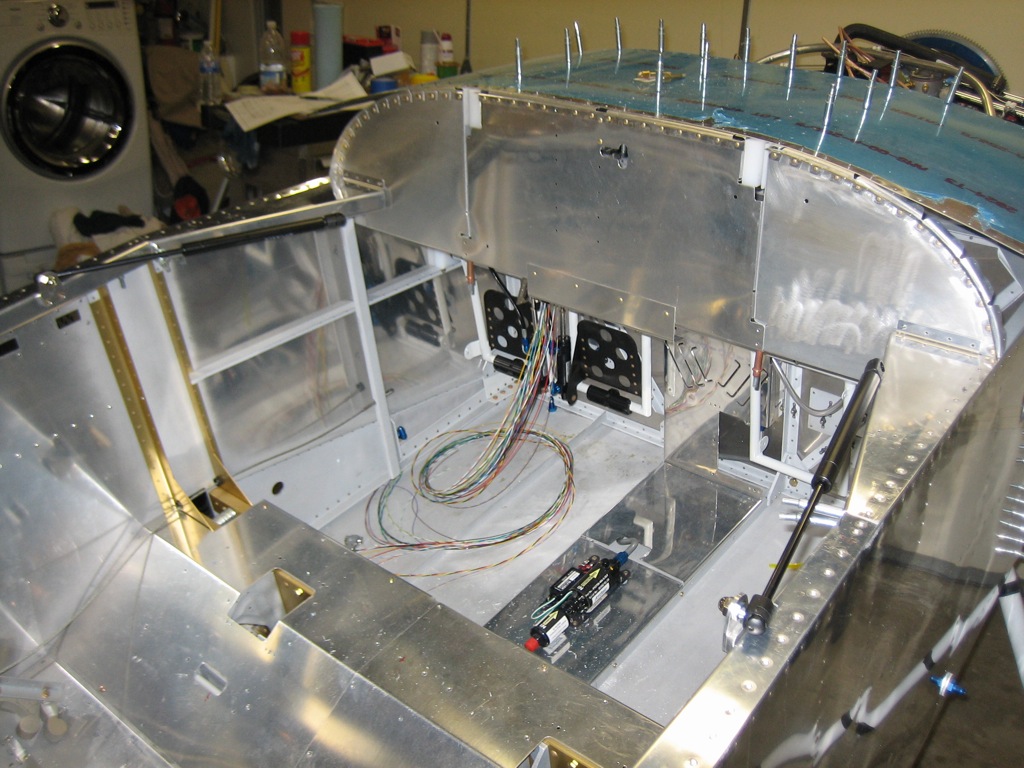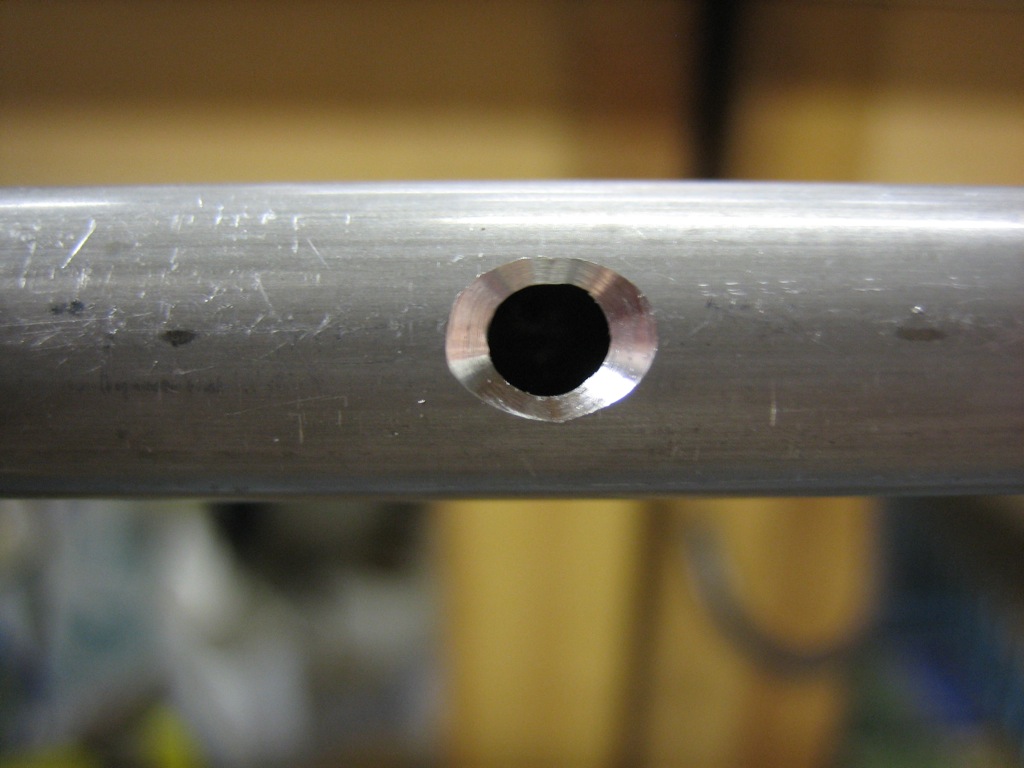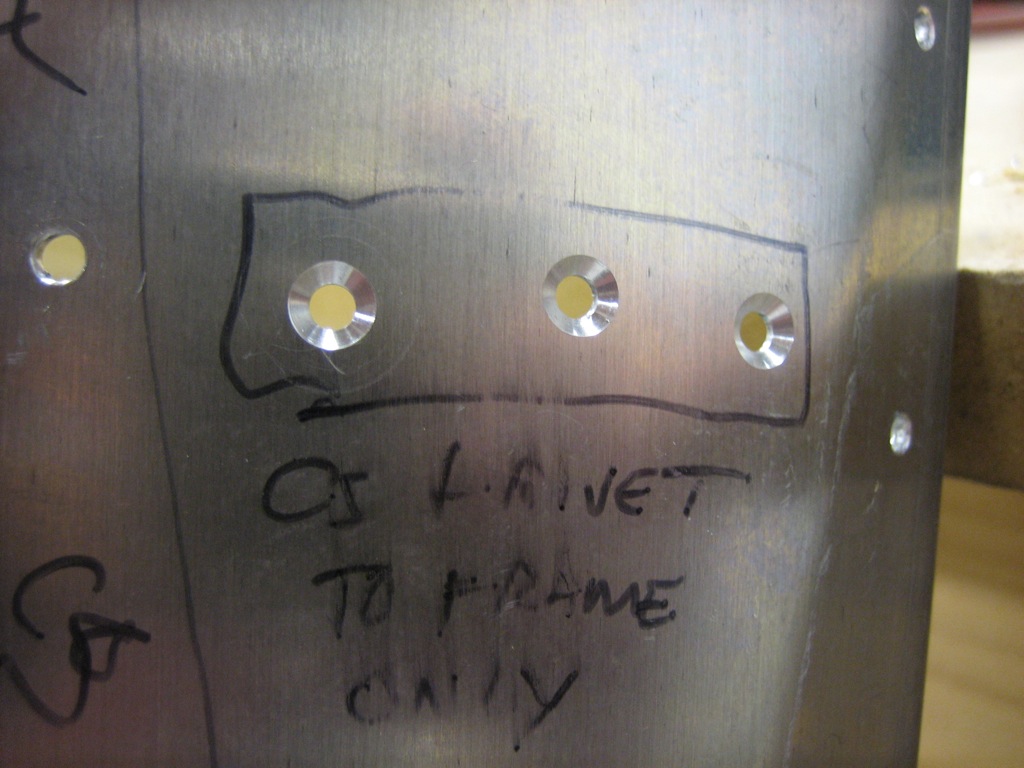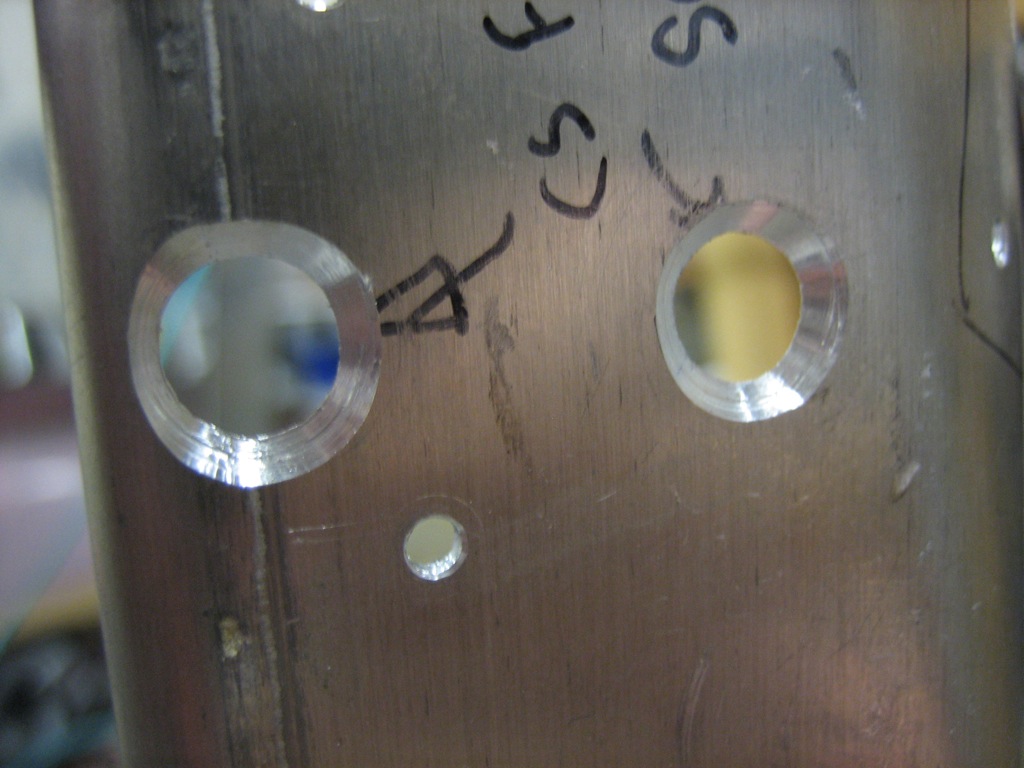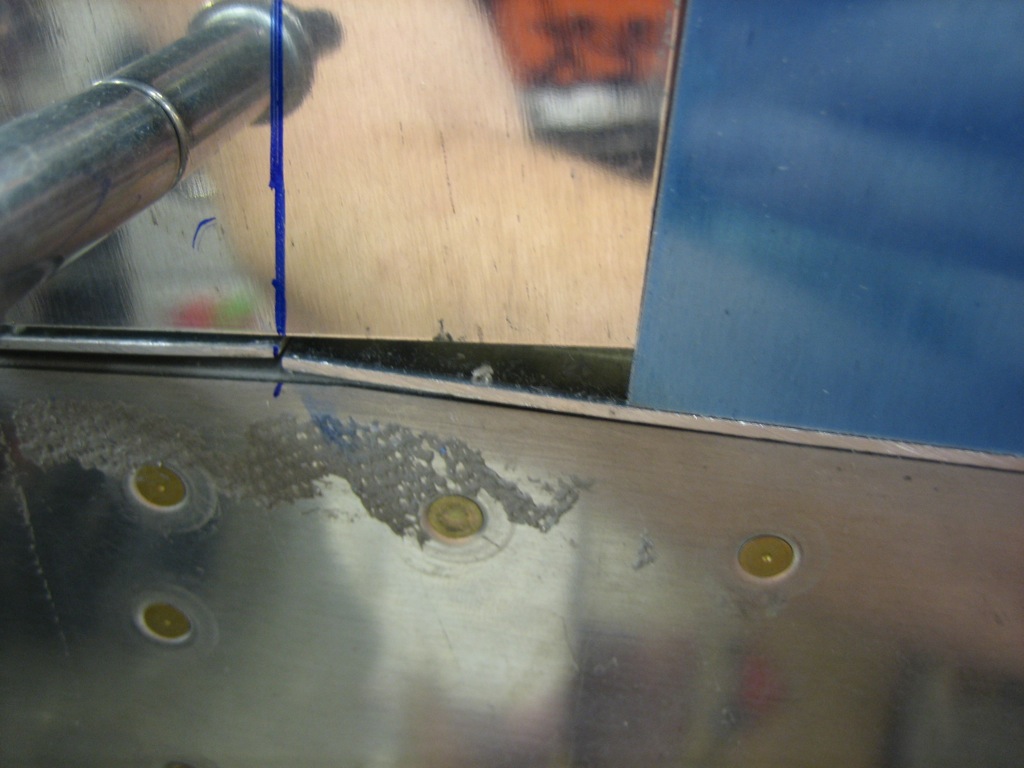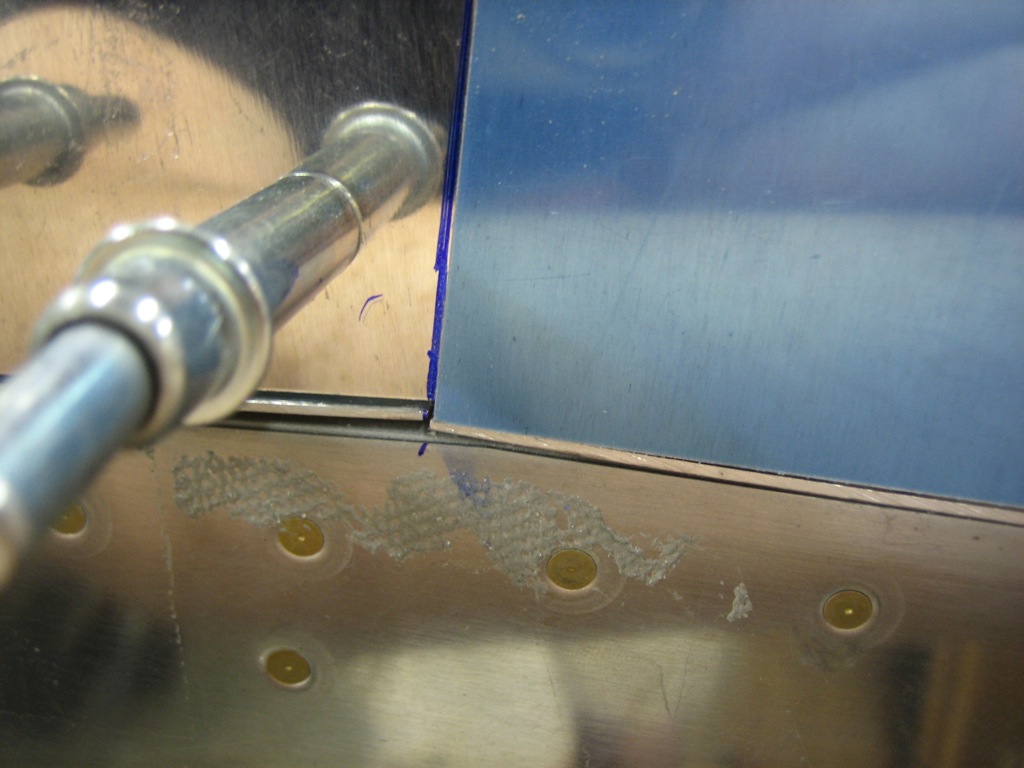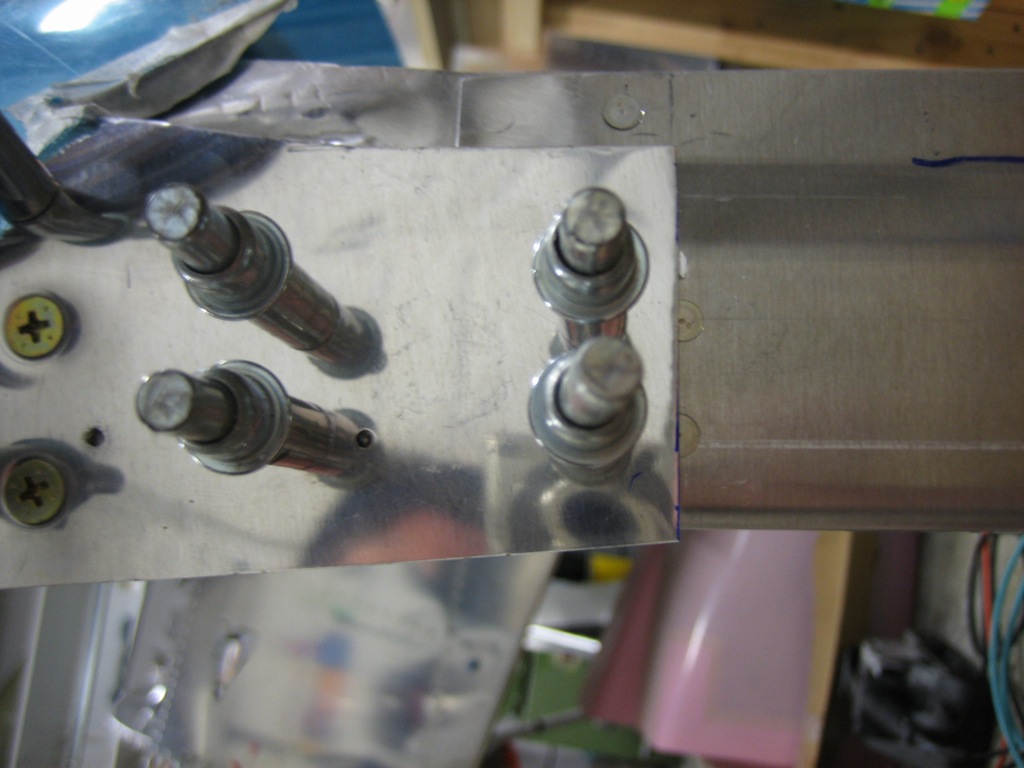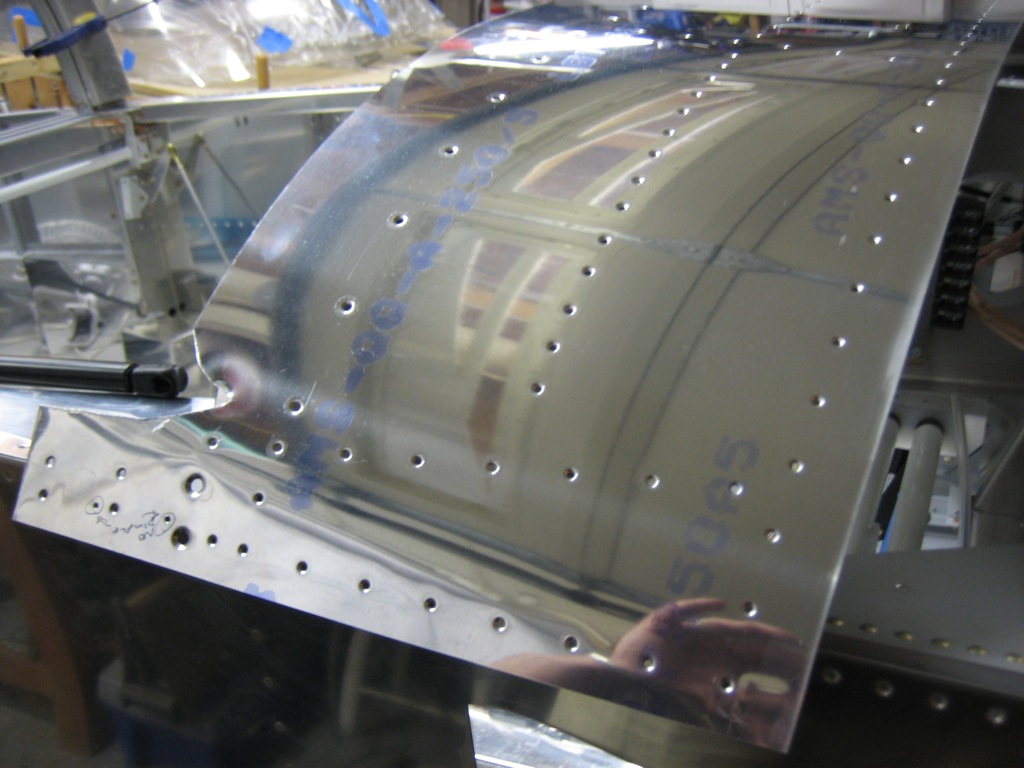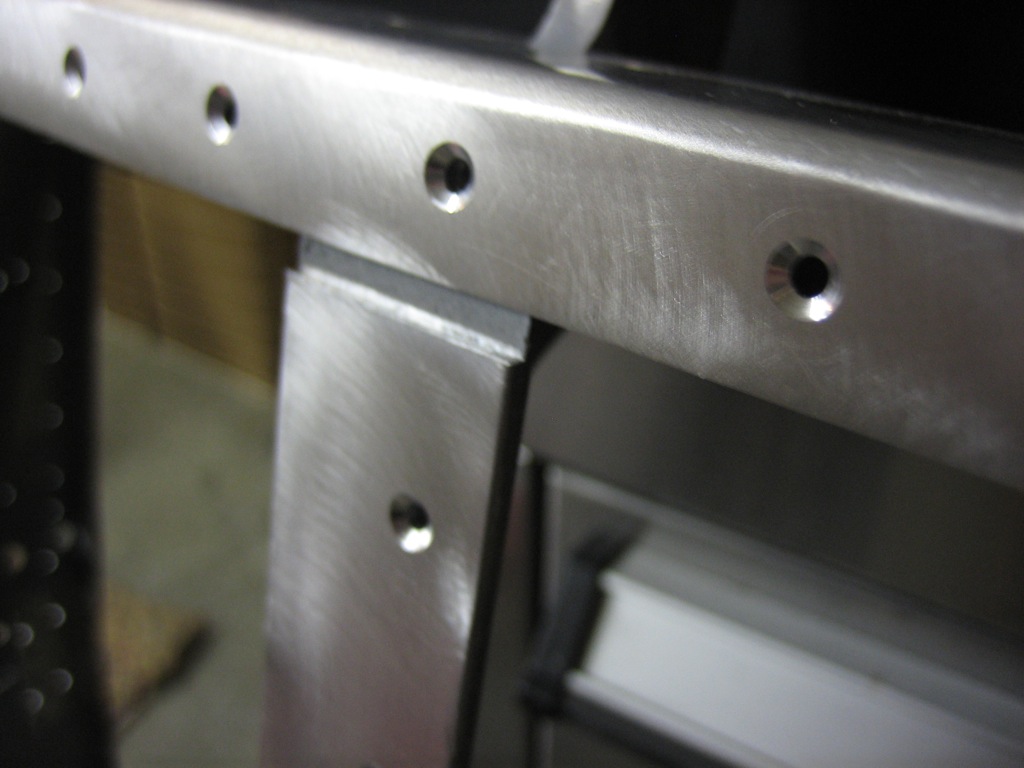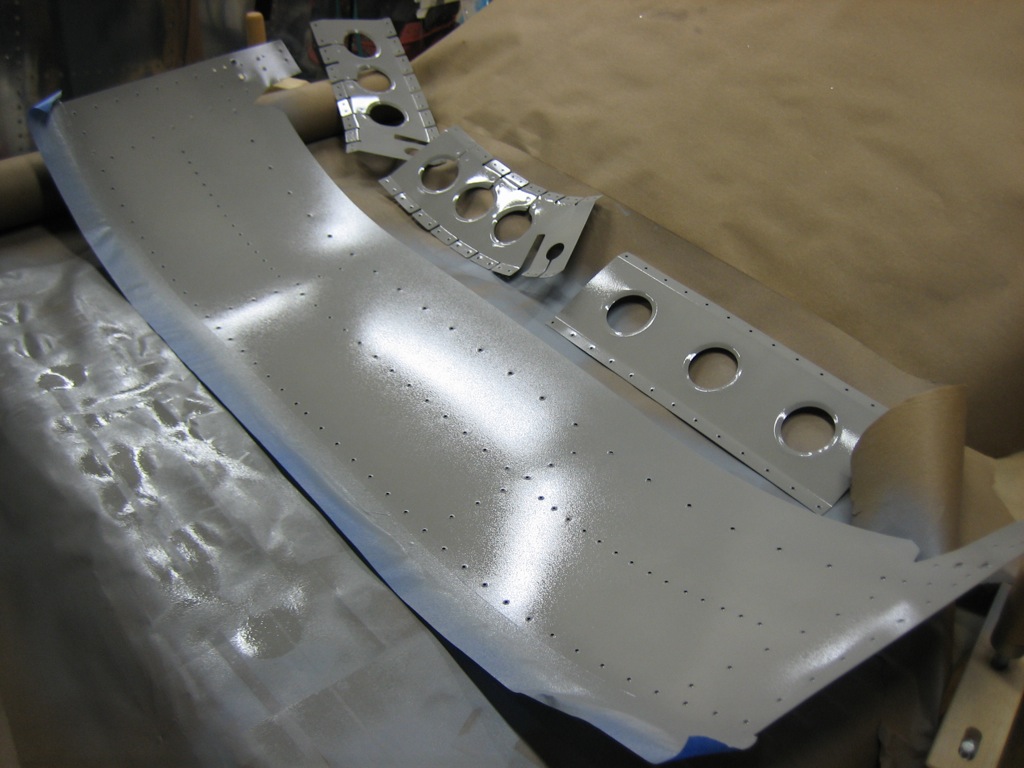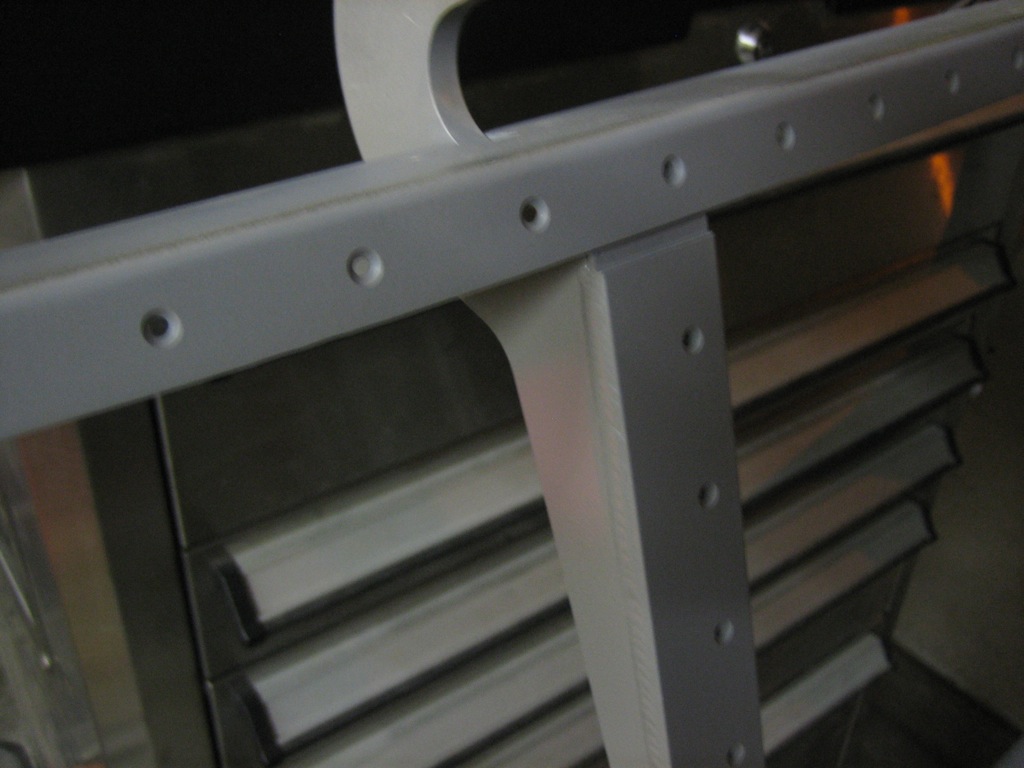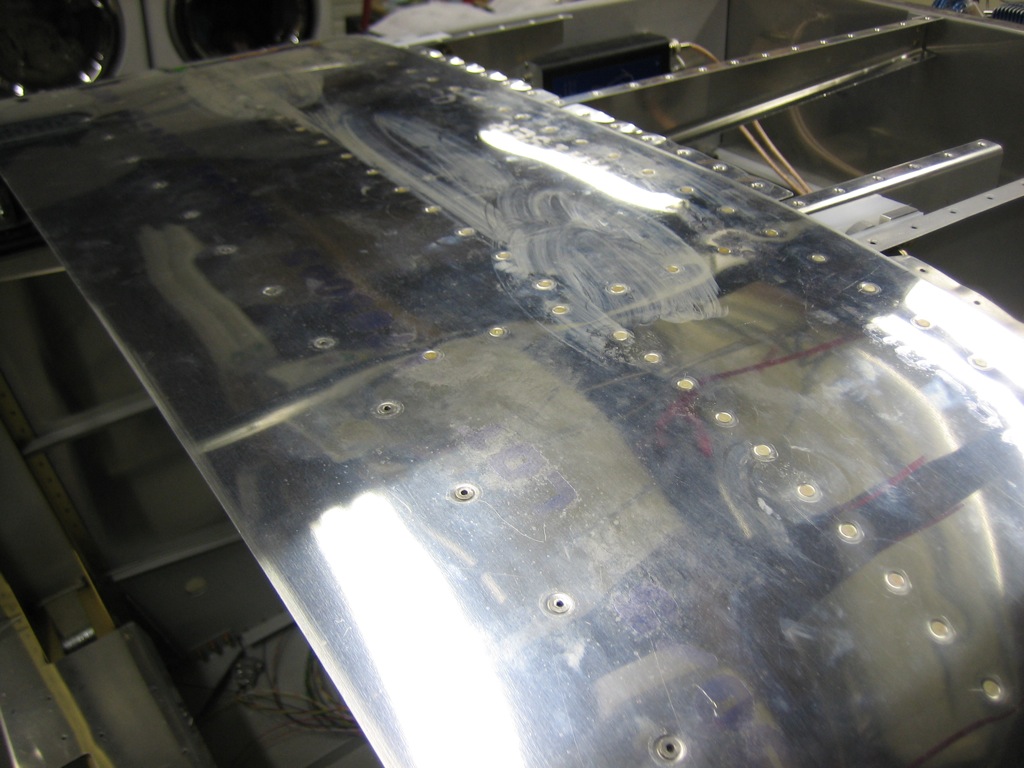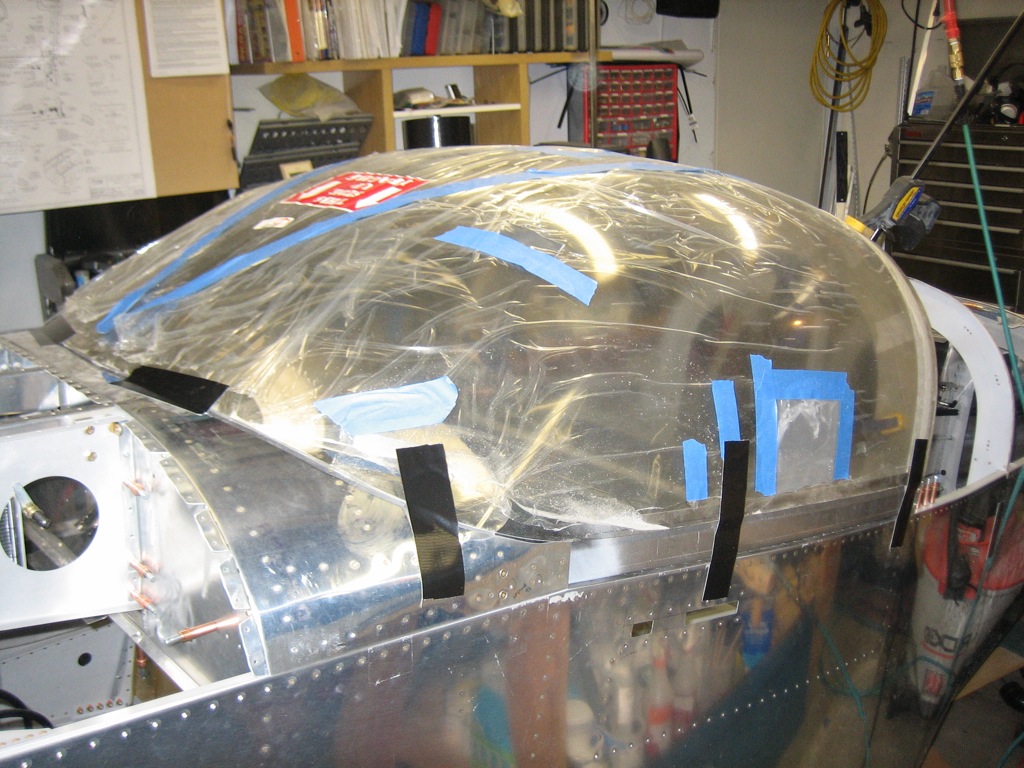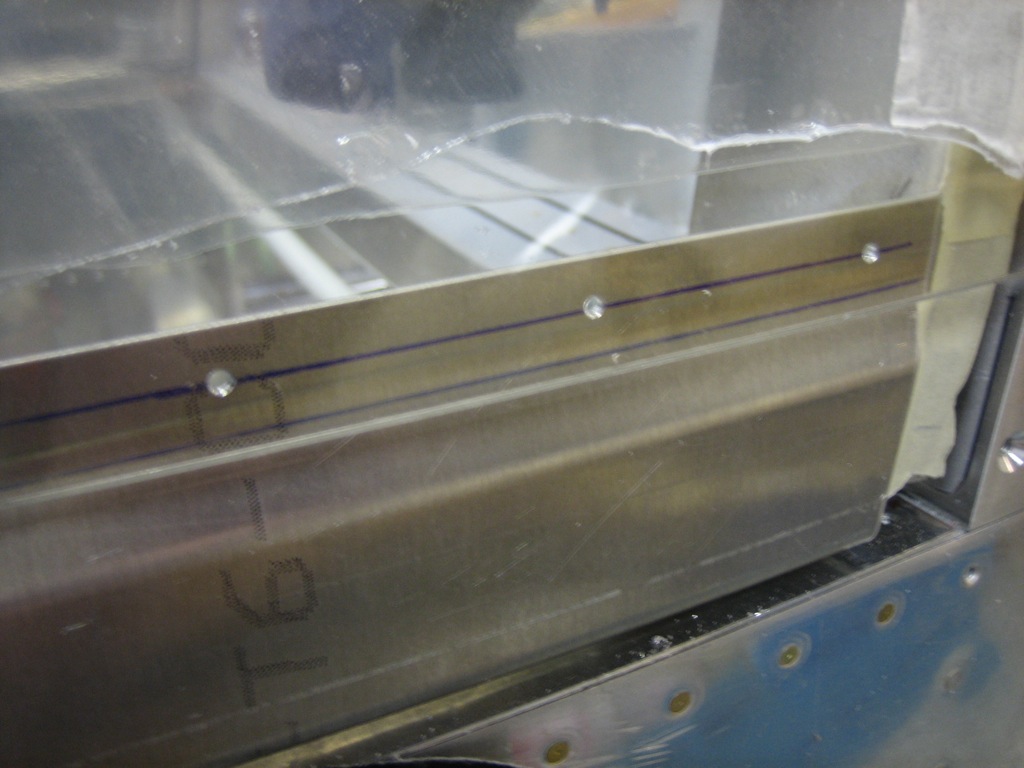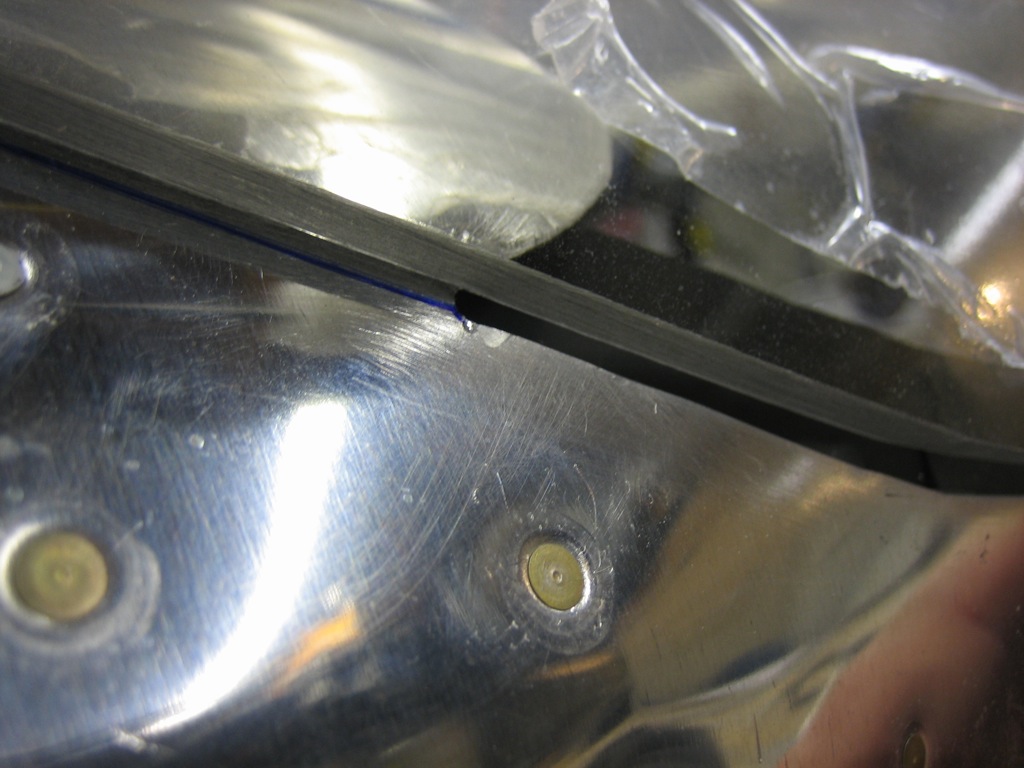We’re getting our house tented for termites this weekend, so I’ve been busy prepping for that. I did want to get started riveting the canopy frame together beforehand though. My buddy Andre dropped by and helped me out for a couple of hours. It seems like it’s been forever since I’ve set any rivets and some of these were pretty tricky, but it all turned out okay. First up, we riveted three of the four rivets that hold the outer ears of the canopy frame reinforcement since these rivets only go through the frame and not the skin.
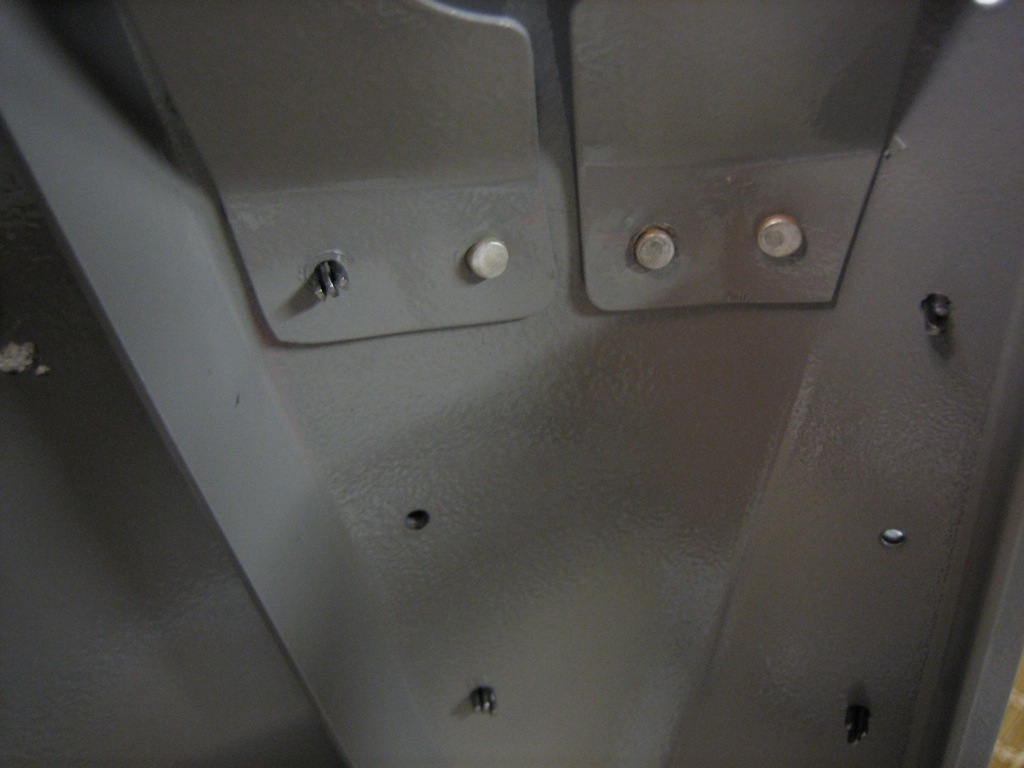
It’s a blurry picture, but we then riveted the skin to the canopy frame channel. This was a bit tricky because the outer canopy frame reinforcement pieces needed to be bent out of the way to reach most of these rivets since it was already riveted on. We couldn’t rivet it on afterward though because there wouldn’t be access to squeeze the rivets above.
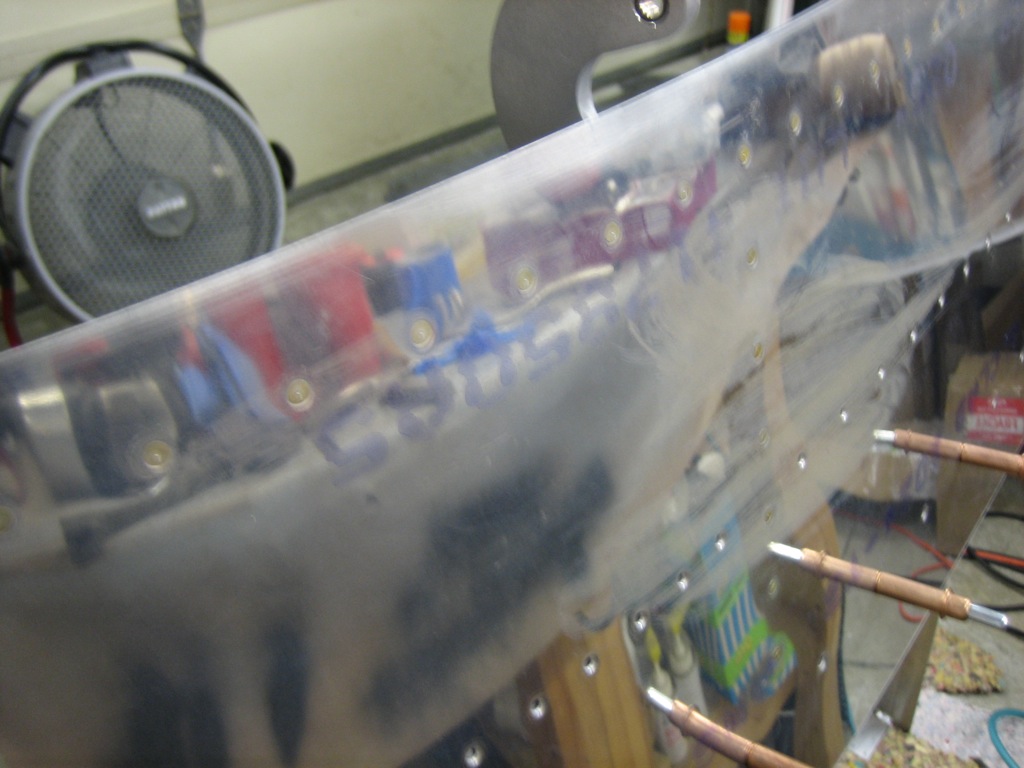
Finally, I pop riveted the forward end of the canopy frame reinforcements. The rest of the riveting will happen once the canopy frame has been reinstalled on the fuselage and is in its final resting place. Since these reinforcement pieces really stiffen the frame and lock everything in position, I don’t want to do this with the frame off the fuselage since it could lock in some twist.
